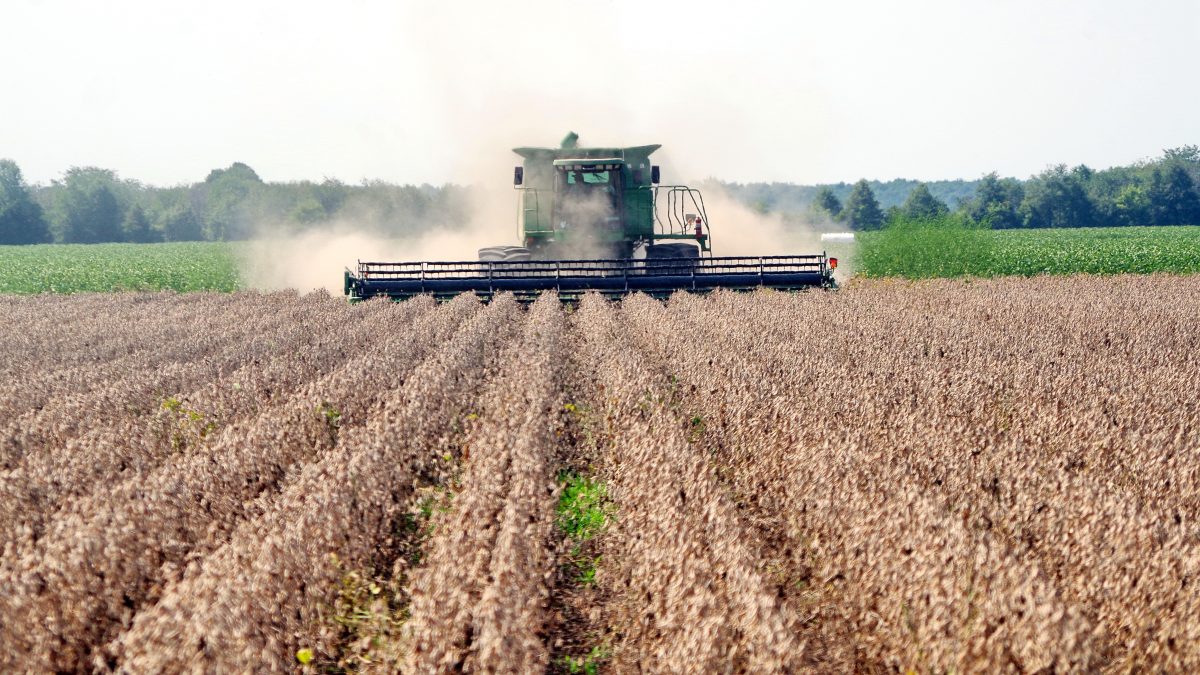As Harvest Marches On, Tariff Pain to Follow
TOPICS
Trade
photo credit: Arkansas Farm Bureau, used with permission.
Veronica Nigh
Former AFBF Economist
Since our trade partners began applying retaliatory tariffs on U.S. agricultural products, the industry has experienced a significant amount of uncertainty, price fluctuation and disrupted trade markets. For some already harvested commodities, like cherries, the impacts of lost sales and depressed prices are well known. For other crops, like soybeans and corn, the impacts of current trade activities have been felt acutely by those who have sold in the spot market over the summer or watched helplessly as futures contracts swung wildly, but the feeling that the worst is yet to come hangs over producers. The consensus is that the impact of lower prices and weak demand from some key foreign customers will be most widespread as the combines roll and harvest 2018 gets underway.
As we detailed in this week’s Market Intel Minute, Corn Harvest Charging Ahead, harvest progress continues to climb northward, with many of the Southern states finishing up corn harvest and getting started on soybeans. As southern farmers deliver their corn or put the grain in storage they are certainly feeling the impact of low prices, but thankfully they have positive basis on their side. However, as harvest moves north we enter negative basis territory. This isn’t a new condition, but it will certainly be felt more acutely in this trade-impacted, low-price year. Using an average of share of acres harvested from 2015 through 2017, we should expect to have harvested approximately one-third of corn acres by the second week in October. Two weeks later that share exceeds 50 percent. As we near the end of October, harvest in the northern Corn Belt, which historically experiences the lowest basis, will be nearly 50 percent complete, bringing the U.S. harvest close to 75 percent complete. The maps in Figure 1 highlight the progression of the corn harvest over the last three years.

Soybean harvest starts a bit later, finishes sooner and follows a different basis pattern than corn. Basis is most positive in the Southeast and weakens as one travels north and west. Based on USDA’s trade mitigation Market Facilitation Program, soybean prices have also been impacted more significantly and negatively from the recent trade actions. If, as expected, harvest 2018 is similar to the 2015-2017 average, soybean farmers deep into negative basis territory will deliver nearly 50 percent of the 2017-2018 soybean harvest in less than three weeks. The maps in Figure 2 highlight the progression of the soybean harvest over the last several years.

Farmers have been patient with the trade situation as it has unfolded over the last several months. We will all watch to see if that patience continues as the combines roll and farmers deliver or store a record-large crop at prices pushed lower than they already were by the trade disputes.
Trending Topics
VIEW ALL